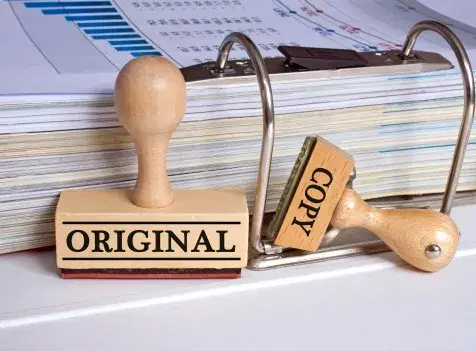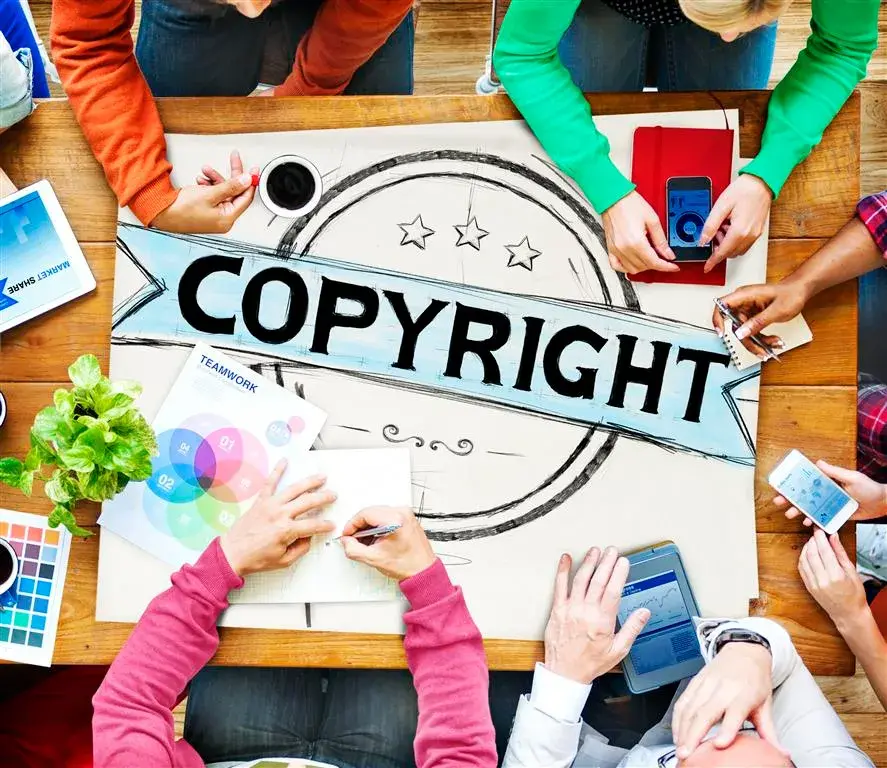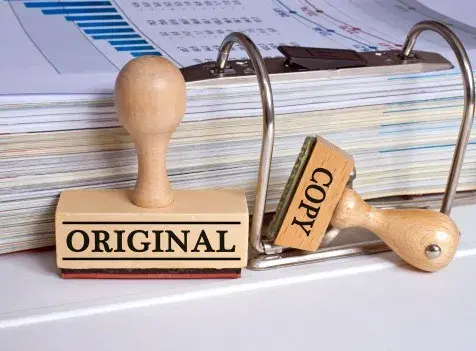Plagiarism Policy for Academicians / Universities

Plagiarism can be commonly understood as an act of using other’s words or ideas without giving due credit/ without acknowledging the original author. Using of even small portion of the work without credit to author will amount to plagiarism.
Talking about plagiarism, the most common question that arises is why the universities must take plagiarism seriously. The answer to this question is straight forward, i.e. in order to encourage thought process and motivate students for expressing their thought. Plagiarism is another form of copying where there is no application of mind. Universities, primary purpose is to empower the students with knowledge and make them capable of generating new creative ideas and expressions. Plagiarism is a menace and if not controlled then the new creative and original expressions will be limited to imagination, and content market will suffer from lack of innovative and novel contents.
In view thereof, in order to keep a check on plagiarism, the universities may take into consideration the following:
- Promote original expression by Students for any research paper or thesis or projects.
- Promote reference to others work but with proper acknowledgement / citation.
- Promote set standard or style of citation/ reference in order to make research/ work of student more authentic and identify source of contents.
- Promote word limits/ page limits with instructions on fonts, spacing, footnotes etc. in order to encourage students to make specific and content enriched drafts.
- Promote consultation and assist content structuring on the proposed topics for research / project.
- Promote regular checks and balance, on contents prepare by students in form of viva.
- Promote a final chapter on “Analysis of the Author/ Researcher”, wherein the student may provide his understanding and conclusion on the overall project/ work.
- Promote paraphrasing as the work of paraphrasing encourages the students to read and write the reference contents in his own words, which ultimately may provide an opportunity for understanding the contents with his own expression, however, even in case of paraphrasing citations/ acknowledgment is mandatory.
- Promote checks on plagiarism by verifying the contents through authentic plagiarism software like Turnitin etc.
- Promote reference/ use of contents from other authors with following checks (variable but may be restricted to):
- Content similarity from Single Author – Preferably Not more than 15%
- Content similarity from a single Journal – Preferably Not more than 20%
- Content similarity from available works (Overall) – May vary between 25% – 40 %.
- Promote finalizing the draft once the student is able restructure contents as per the standards finalized by University in terms of content similarity/ citation standards or style etc.
The above mentioned are few policies that are to be taken into consideration, by academicians / Universities, before finalizing any research / thesis / projects. The content market in India is fast growing and access to growing contents is growing much faster, and therefore, it is very important for academicians and universities to ensure the work prepared by students are properly acknowledged and cited in order to give due credit to authors of reference in the work.
Correction and Rectification of Copyright Registration

Where any work is recorded in error with the Copyright Office, then the power of correcting errors on the particulars entered in the Register of Copyright is available with the Registrar of Copyrights and power of correction, rectification / expunging the Registration Certificate vests with Intellectual Property Appellate Board (IPAB). Let us analyse all the relevant provisions of the Copyright Act 1957 (hereinafter “the Act”) and Copyright Rules 2013 (hereinafter “the Rules”), as under:
Section 49 – Correction of entries in the Register of Copyrights – The Registrar of Copyrights may, in the prescribed cases and subject to the prescribed conditions, amend or alter the Register of Copyrights by –
(a) correcting any error in any name, address or particulars; or
(b) correcting any other error which may have arisen therein by accidental slip or omission.
Section 50 – Rectification of Register by Appellate Board – The Appellate Board, on application of the Registrar of Copyrights or of any person aggrieved, shall order the rectification of the Register of Copyrights by –
(a) the making of any entry wrongly omitted to be made in the Register, or
(b) the expunging of any entry wrongly made in, or remaining on, the Register, or
(c) the correction of any error or defect in the Register
Rule 71 – Correction and rectification of entries in the Register of Copyrights. –
(1) The Registrar of Copyrights may, either suo motu or on application of any interested person, amend, or alter the Register of Copyrights for the entries specified in Section 49, after giving, wherever practicable, to the person affected by such amendment or alteration, an opportunity to show cause against such amendment or alteration, and communicate to such person the amendment or alteration so made.
(2) The Registrar of Copyrights shall rectify the entries made in the Register of Copyrights after an order is being passed by the Board on an application made by the Registrar of Copyrights in this behalf under Section 50.
WHO CAN APPLY?
Any person aggrieved by the entry made in the Register of Copyright, may make a request to Registrar of Copyright for making corrections in the records of the Copyright Office. Such request of corrections are made in FORM XV – Application for registration of changes in Particulars of Copyright.
Similarly, the aggrieved person, by any entry wrongfully omitted or entered or any defect entry on the Register, may make an application before the IPAB seeking rectification of Register of Copyright. Similarly, Registrar of Copyright, upon his knowledge of wrongful entry or erroneous entry in the Register of Copyrights, may also make an application to IPAB for rectification of the records of the Register of Copyright.
POWER OF REGISTRAR OF COPYRIGHT
Section 49 of the Act empowers the Registrar of Copyright to make corrections on the records of the Copyright Office and empowers the IPAB to make corrections and rectify the records of the Copyright Office. The power of Registrar of Copyright is limited to make corrections in case of any correction of any error in any name, address or particular, or any other error by accidental slip or omission, and also has the power to refer an application to IPAB for rectification of the Register of Copyright.
POWER OF IPAB
Under Section 50 of the Act, the IPAB has the power to rectify the Register of Copyright in case of wrongful omission, wrongful entry or to correct any defect in the Register of Copyright. An application can directly be made to IPAB or through the Registrar of Copyrights seeking rectification of Register of Copyright.[1] The IPAB after hearing the parties concerned and upon satisfaction of wrongful entry or omission or defect in the Register, may pass an order and direct the Registrar of Copyright to expunge the Registrations accordingly.
CORRECTION IN REGISTER OF COPYRIGHT
The term ‘correction of any error’, is with respect to corrections of errors and not changing the essence of the application. As per practice of the Copyright Office, few examples of corrections that may be done are:
- Change details of publication and update the details of publisher, in case the work was unpublished in Registration Certificate.
- Update details of subsequent publication.
- Details of person authorized to assign or license the rights comprising the Copyright.
- Details of owners of the various rights comprising the Copyright in the work and the extent of rights held by each, together with particulars of assignment and licenses.
- Details of location of work (in case of artistic work).
Few examples of details which may not be amended are:
- Details of Applicant.
- Details of Title of work/ category of work and language of work
- Details of Author.
- Status of Application from Published to Unpublished
- Essential details of the Registration that affects the essence of protection of the work.
EXPUNGING FROM REGISTER OF COPYRIGHTS
Once an application is Registered in the Register of Copyrights, then the only process of removing / rectifying the records so entered is under Section 50 of the Copyright Act 1957. The opportunities for the interested party to file an objection (in other words oppose an application) is within thirty days from the from the receipt of the application,[2] and once this period expires, then the application proceeds further for examination and upon compliance towards registration.
Before Registration – Under Rule 10 of the Rules, it is stated “If no objection to such registration is received by the Registrar of Copyrights within thirty days of the receipt of the application, the Registrar of Copyrights shall, if satisfied about the correctness of the particulars given in the application, enter such particulars in the Register of Copyrights.” The Rule can be read through to state that the satisfaction about the correctness of particular can be questioned anytime before the entry made in Register of Copyrights. Therefore, an aggrieved party may make an application to the Registrar of Copyright, anytime after expiry of the thirty days period of objection but before entry into the Register of Copyright, requesting the learned Registrar to exercise his discretion and schedule a hearing to determine the correctness of the Particulars of the Application made by the Applicant.
After Registration – An aggrieved party therefore may file a request for expunging of Registration directly with IPAB, with all available details and evidence. This process will also involve the Registrar of Copyrights to provide documents supporting the entry made in the Register of Copyright, however, the Registrar of Copyright is not liable to make any due diligence search for existing Copyright at the time of examination of Copyright Application. The onus will lie on the aggrieved party to support the request / reasons for expunging the records entered in the Register of Copyright.
[1] Tucker Fastners Ltd. vs. Solsons Exports Pvt. Ltd. (LAWS(CP)-2008-11-1); Wings Pharmaceuticals Pvt. Ltd. v. Vest Pharmaceuticals Pvt. Ltd. [2009(39) PTC 385 (CB)]; Bata India Ltd. v. Khadim Holdings Pvt. Ltd. [2008 (37) PTC 171 (CB)]; Dr. Ing H.C.F. Porsche AG vs. Mr. Pritam Gain & Ors. (CS (COMM) 751/2018).
[2] Rule 70(10), The Copyright Rules 2013


 Talking about plagiarism, the most common question that arises is why the universities must take plagiarism seriously. The answer to this question is straight forward, i.e. in order to encourage thought process and motivate students for expressing their thought.
Talking about plagiarism, the most common question that arises is why the universities must take plagiarism seriously. The answer to this question is straight forward, i.e. in order to encourage thought process and motivate students for expressing their thought. Where any work is recorded in error with the Copyright Office, then the power of correcting errors on the particulars entered in the Register of Copyright is available with the Registrar of Copyrights and power of correction, rectification / expunging the Registration Certificate vests with Intellectual Property Appellate Board (IPAB).
Where any work is recorded in error with the Copyright Office, then the power of correcting errors on the particulars entered in the Register of Copyright is available with the Registrar of Copyrights and power of correction, rectification / expunging the Registration Certificate vests with Intellectual Property Appellate Board (IPAB).